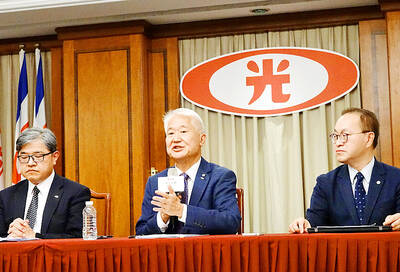NASA may be going to the same old moon with a ship that looks a lot like a 1960s Apollo capsule, but the space agency said it is going to do something dramatically different this time: Stay there.
Unveiling the agency's bold plan for a return to the moon, NASA said on Monday it will establish an international base camp on one of the moon's poles, permanently staffing it by 2024, four years after astronauts land there.
It is a sweeping departure from the Apollo moon missions of the 1960s and represents a new phase of space exploration after space shuttles are retired in 2010.
NASA chose a "lunar outpost" over the short expeditions of the 1960s. Apollo flights were all around the middle area of the moon, but NASA decided to go to the moon's poles because they are best for longer-term settlements. And this time NASA is welcoming other nations on its journey.
The more likely of the two lunar destinations is the moon's south pole because it's sunlit for three-quarters of the time.
That offers a better locale for solar power, plus the site has possible resources to mine nearby, NASA Associate Deputy Administrator Doug Cooke said.
To get to the moon, NASA will use two vehicles -- the Orion exploration vehicle and an attached all-purpose lunar lander that could touch down anywhere and be the beginnings a base camp, exploration chief Scott Horowitz said at a news conference in Houston.
In 2004, the year after the shuttle Columbia accident that killed seven astronauts, US President George W. Bush announced a plan to return astronauts to the moon by 2020, and a later mission to Mars. The 16-year-long venture to the moon will take twice as long as NASA's first trip there took in planning.
Last year, NASA said it would cost US$104 billion just to get back to the moon for its first trip, but on Monday NASA officials declined to estimate the larger costs of a permanent lunar program.
The estimated time frame for NASA's lunar plans are: A first test of one of the lunar spaceships in 2009; the first manned test flight of the Orion exploration vehicle in 2014 and the first flight of the four-astronaut crew to the moon in 2020.
For four years, the lunar base won't be built up enough for long visits, so astronauts will only spend a week at a time. But after that, NASA envisions people living on the moon for six-month stints.
NASA hopes that hydrogen, oxygen and other moon resources can be used as supplies for the camp.

People can preregister to receive their NT$10,000 (US$325) cash distributed from the central government on Nov. 5 after President William Lai (賴清德) yesterday signed the Special Budget for Strengthening Economic, Social and National Security Resilience, the Executive Yuan told a news conference last night. The special budget, passed by the Legislative Yuan on Friday last week with a cash handout budget of NT$236 billion, was officially submitted to the Executive Yuan and the Presidential Office yesterday afternoon. People can register through the official Web site at https://10000.gov.tw to have the funds deposited into their bank accounts, withdraw the funds at automated teller

PEACE AND STABILITY: Maintaining the cross-strait ‘status quo’ has long been the government’s position, the Ministry of Foreign Affairs said Taiwan is committed to maintaining the cross-strait “status quo” and seeks no escalation of tensions, the Ministry of Foreign Affairs (MOFA) said yesterday, rebutting a Time magazine opinion piece that described President William Lai (賴清德) as a “reckless leader.” The article, titled “The US Must Beware of Taiwan’s Reckless Leader,” was written by Lyle Goldstein, director of the Asia Program at the Washington-based Defense Priorities think tank. Goldstein wrote that Taiwan is “the world’s most dangerous flashpoint” amid ongoing conflicts in the Middle East and Russia’s invasion of Ukraine. He said that the situation in the Taiwan Strait has become less stable

CONCESSION: A Shin Kong official said that the firm was ‘willing to contribute’ to the nation, as the move would enable Nvidia Crop to build its headquarters in Taiwan Shin Kong Life Insurance Co (新光人壽) yesterday said it would relinquish land-use rights, or known as surface rights, for two plots in Taipei’s Beitou District (北投), paving the way for Nvidia Corp to expand its office footprint in Taiwan. The insurer said it made the decision “in the interest of the nation’s greater good” and would not seek compensation from taxpayers for potential future losses, calling the move a gesture to resolve a months-long impasse among the insurer, the Taipei City Government and the US chip giant. “The decision was made on the condition that the Taipei City Government reimburses the related

FRESH LOOK: A committee would gather expert and public input on the themes and visual motifs that would appear on the notes, the central bank governor said The central bank has launched a comprehensive redesign of New Taiwan dollar banknotes to enhance anti-counterfeiting measures, improve accessibility and align the bills with global sustainability standards, Governor Yang Chin-long (楊金龍) told a meeting of the legislature’s Finance Committee yesterday. The overhaul would affect all five denominations — NT$100, NT$200, NT$500, NT$1,000 and NT$2,000 notes — but not coins, Yang said. It would be the first major update to the banknotes in 24 years, as the current series, introduced in 2001, has remained in circulation amid rapid advances in printing technology and security standards. “Updating the notes is essential to safeguard the integrity